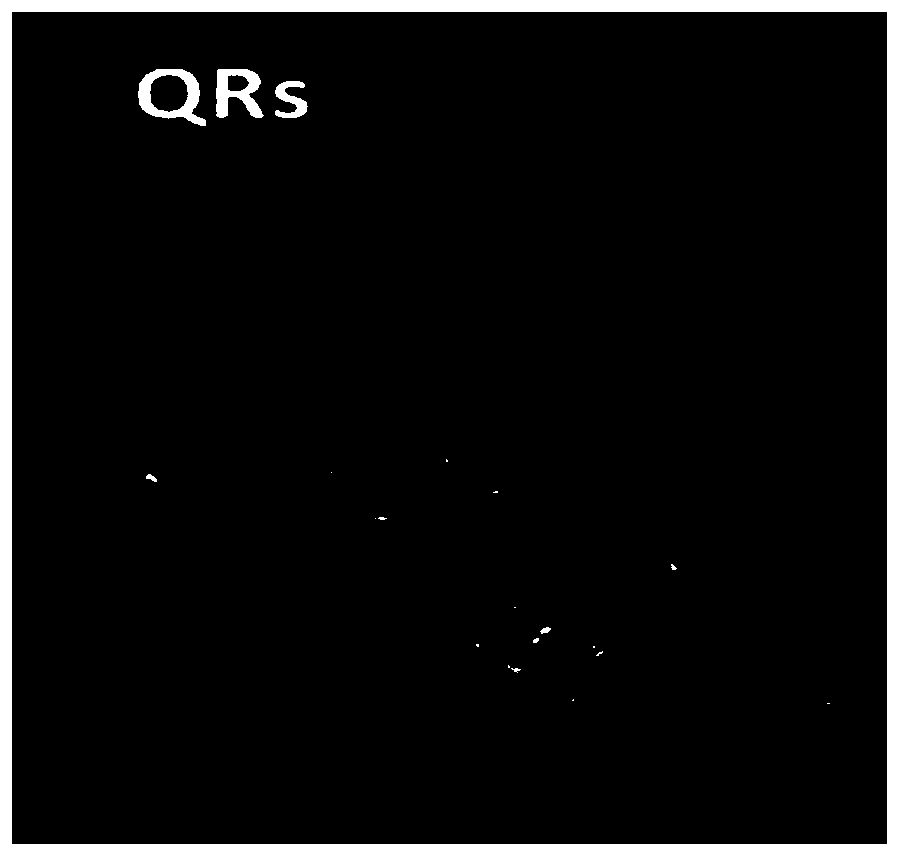Preparation method of silica-coated quantum rod
A technology of silicon dioxide and quantum rods, which is applied in the field of nanomaterials, can solve the problems of limiting the application of display technology, the inability to coat quantum rods, and the inability of quantum rods to achieve efficient and stable quantum rods, etc., and achieve the effect of increasing the fluorescence quantum yield
- Summary
- Abstract
- Description
- Claims
- Application Information
AI Technical Summary
Problems solved by technology
Method used
Image
Examples
Embodiment 1
[0048] In this example, silica-coated quantum rods were prepared through the following steps
[0049] (1) Mix 10nmol of CdSe / CdS core / shell quantum rod n-hexane solution with 100mL of n-heptane and 32mL tetrapolyethylene glycol monolauryl ether in a single-necked flask, and stir for 10min with a magnetic stirrer to make The solution is mixed thoroughly.
[0050] (2) Slowly add 5.5 mL of ammonia water with a concentration of 2.6% to the mixed solution in step (1), and stir for 1 hour to form a microemulsion;
[0051] (3) Add 0.25 mL of TEOS to the microemulsion, slowly stir and react for 48 hours, add methanol to the solution, break the emulsion, centrifuge at low speed, remove the supernatant, and obtain silicon dioxide-coated quantum rods.
[0052] (4) Disperse the silica-coated quantum rods obtained in (3) in an ethanol solution.
[0053] The quantum rods with CdSe / CdS core / shell structure and the quantum rods coated with silica were observed by transmission electron micro...
Embodiment 2
[0055] In this example, silica-coated quantum rods were prepared through the following steps
[0056] (1) Mix 10nmol of CdSe / CdS core / shell quantum rod n-hexane solution with 100mL of n-heptane and 32mL tetrapolyethylene glycol monolauryl ether in a single-necked flask, and stir for 10min with a magnetic stirrer to make The solution is mixed thoroughly.
[0057] (2) Slowly add 5.5 mL of ammonia water with a concentration of 2.5% to the mixed solution in step (1), and stir for 1 hour to form a microemulsion;
[0058] (3) Add 0.05mL of TEOS to the microemulsion, slowly stir and react for 48 hours, add methanol to the solution, break the emulsion, centrifuge at low speed, remove the supernatant, and obtain the silica-coated quantum rods, the TEM picture is as follows image 3 shown.
[0059] (4) Disperse the silica-coated quantum rods obtained in (3) in an ethanol solution.
Embodiment 3
[0061] In this example, silica-coated quantum rods were prepared through the following steps
[0062] (1) Mix 10nmol of CdSe / CdS core / shell quantum rod n-hexane solution with 100mL of n-heptane and 32mL tetrapolyethylene glycol monolauryl ether in a single-necked flask, and stir for 10min with a magnetic stirrer to make The solution is mixed thoroughly.
[0063] (2) 5.5 mL of ammonia water with a concentration of 2.8% was slowly added dropwise to the mixed solution in step (1), and stirred for 1 h to form a microemulsion;
[0064] (3) Add 0.03mL of TEOS to the microemulsion, stir slowly and react for 48h, add methanol to the solution, break the emulsion, centrifuge at low speed, remove the supernatant, and obtain the silica-coated quantum rods. The TEM picture is as follows Figure 4 shown.
[0065] (4) Disperse the silica-coated quantum rods obtained in (3) in an ethanol solution.
PUM
| Property | Measurement | Unit |
|---|---|---|
| diameter | aaaaa | aaaaa |
| size | aaaaa | aaaaa |
Abstract
Description
Claims
Application Information
 Login to View More
Login to View More - R&D
- Intellectual Property
- Life Sciences
- Materials
- Tech Scout
- Unparalleled Data Quality
- Higher Quality Content
- 60% Fewer Hallucinations
Browse by: Latest US Patents, China's latest patents, Technical Efficacy Thesaurus, Application Domain, Technology Topic, Popular Technical Reports.
© 2025 PatSnap. All rights reserved.Legal|Privacy policy|Modern Slavery Act Transparency Statement|Sitemap|About US| Contact US: help@patsnap.com



